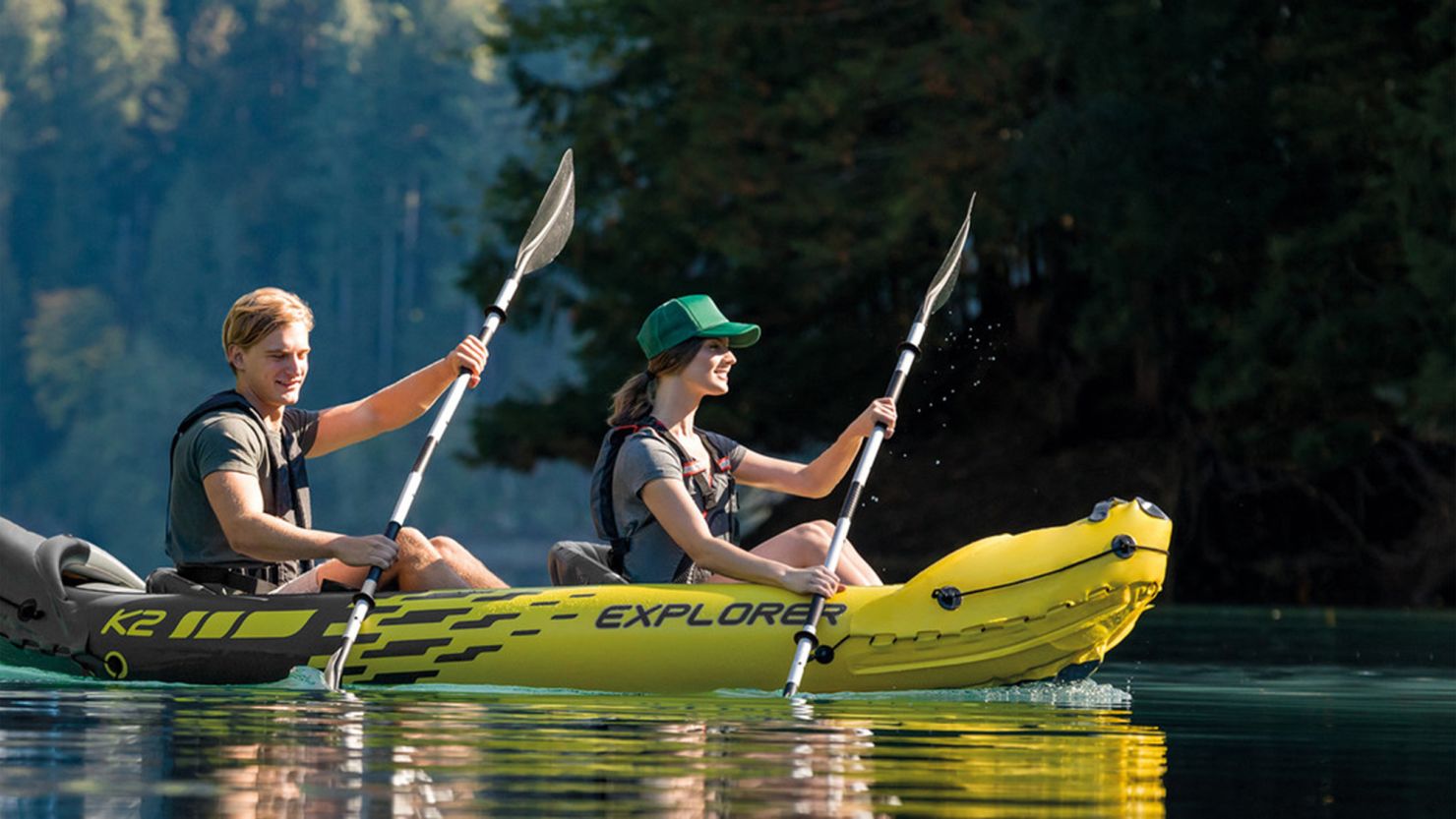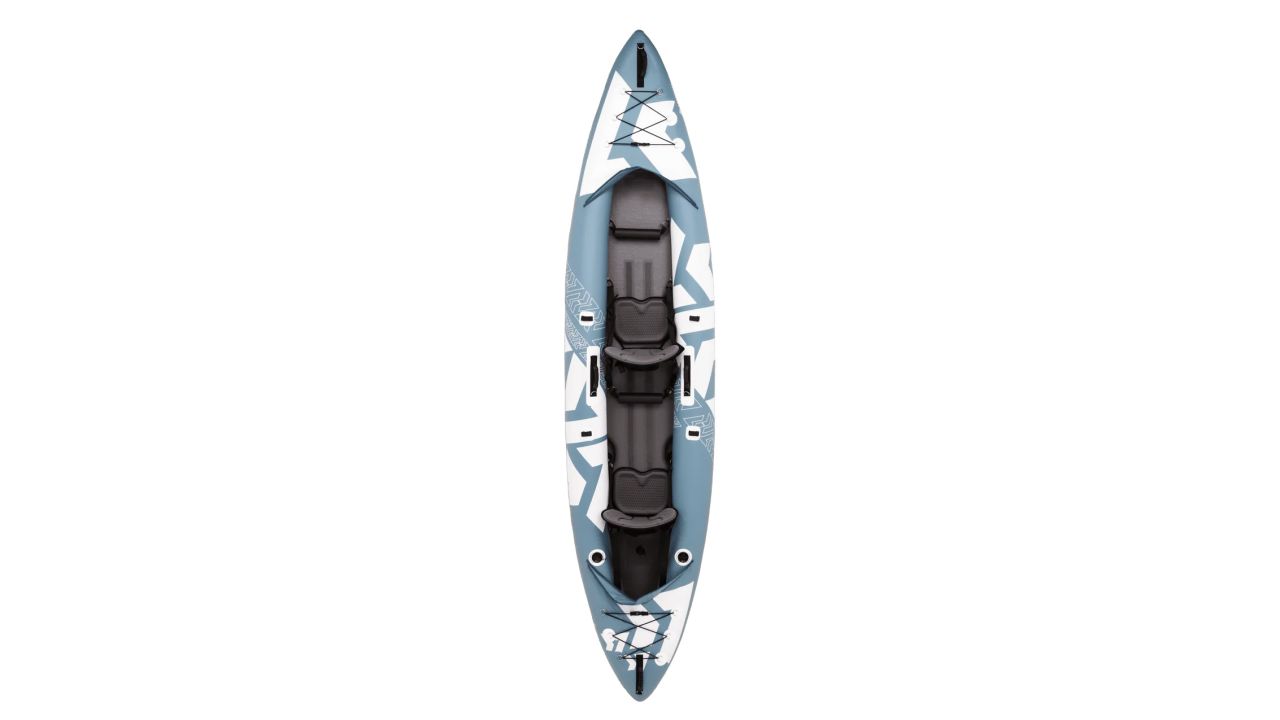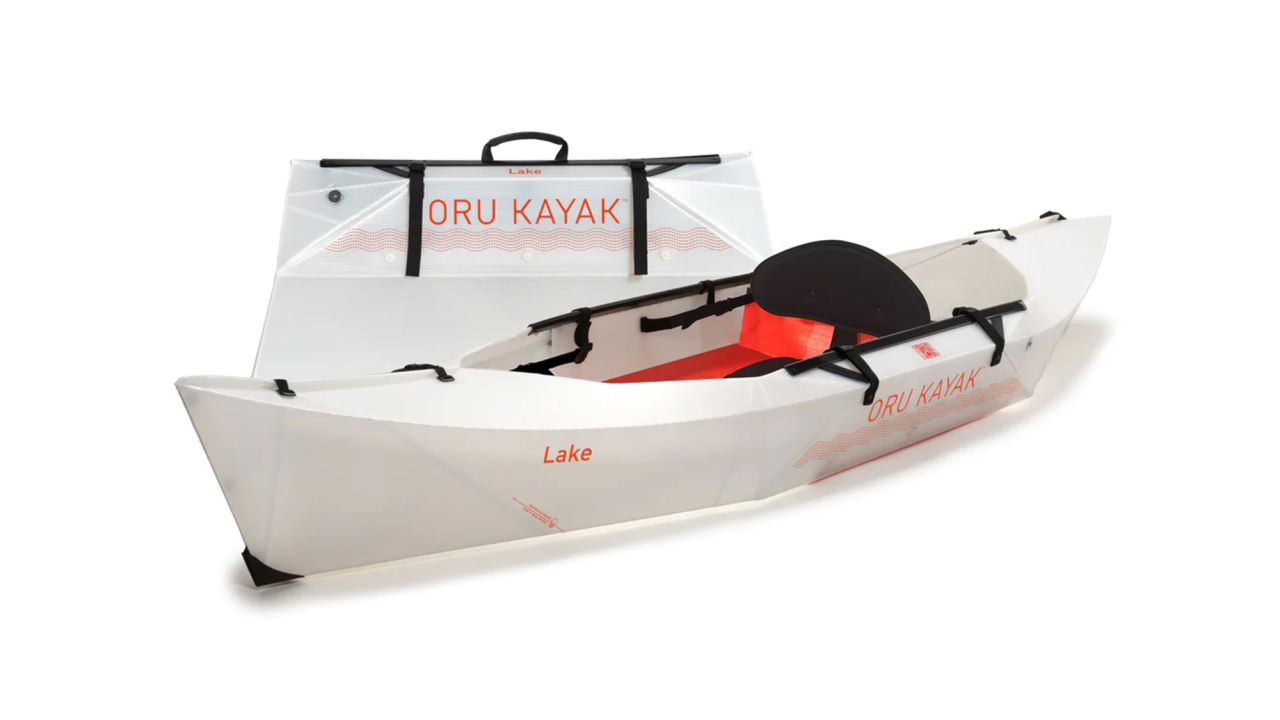Once upon a time, hoisting a cumbersome kayak or canoe onto the roof of your car was the only way to log laps on the water. While those traditional watercrafts are still a top choice for experienced whitewater paddlers, they come with major drawbacks. Not only are they tough to transport, but storage is also difficult, especially for folks in urban areas where living space is at a premium.
That’s why packable kayaks are becoming more popular every year. Regardless of whether they’re inflatable, foldable or otherwise shrinkable, there is one truth: They’re a lot easier. Inflatable kayaks are also convenient, accessible and often more affordable than their burlier brethren. Depending on the kayak, they can often handle impacts better too, since air squishes better than rotomolded plastic.

“Our biggest struggle as an adventure family is where to store all the gear,” says Amelia Mayer, mom of five and founder of Tales of a Mountain Mama. “While it takes a few more minutes to set up and take down inflatable boats, the tradeoff is worth it for easier to-and-from the river and easy storage in our shed of fun.”
It doesn’t matter if you’re a first-timer hitting the water with your kiddo or an experienced paddler heading out on an overnight adventure; inflatable kayaks are for you. Thanks to recommendations from some of our favorite river rats, we’ve rounded up the best inflatable kayaks on the market. We’ve even included a couple — ahem — packable boats that aren’t technically kayaks, but we bet you’ll like them anyway.
The Platte Plus is my favorite two-person, inflatable kayak because it has everything: durable materials, lots of space savings and solid tracking on the water. The two-piece construction easily packs into the included wheeled suitcase, but also adds stability on the water with two separately inflatable pontoons and a removable drop-stitched floor between them. On top of the two included four-piece paddles, the Platte Plus comes with two adjustable seats (with foam so your butt doesn’t hurt), a pump, repair kit and two tracking fins. Kokopelli doesn’t skimp on the performance accessories either. Not only does the kayak have two bungee cargo sections on the bow and stern that add plenty of storage space, but it is also equipped with plenty of D-rings and four drain plugs in case you take on water. Added bonus: Our 5-year-old thinks it’s the best ride in town.
It’s not inflatable but it’s still darn packable. Oru’s host of foldable watercrafts are known for their small size and weight, and the Beach LT is no different. No pump is needed so you can get out on the water quickly — once you adjust to unfolding the kayak. The roomy hull is capacious for a solo navigator, but also offers plenty of space for gear or small friends of the human and canine variety. You have to awkwardly tip most inflatable kayaks upside down to dump water at the end of an adventure, but Oru’s foldable kayaks make that easy: It just pours out when you’re folding it up. The plastic shell can cause hot spots when rubbed against your skin, so dress accordingly.
You won’t get the bells and whistles with the Explorer K2, but you will get affordability — and that matters. Instead of a drop-stitch floor like the Platte Plus, the Explorer K2 uses an I-beam floor to add rigidity on the water. The two inflatable seats are comfortable enough and the removable back fin adds a bit of tracking on bumpy water. The Explorer K2 isn’t the kayak to take you into whitewater rapids, but it is a great choice if you want to get some exercise. Plus, it comes with two aluminum oars and a high-output pump that makes inflation a breeze. “I can get in and out of the water so quickly,” says James de Lacey, a strength trainer and water sports enthusiast.
Beginners looking for an inflatable kayak to go the distance will appreciate the comfort and durability of the Tomcat. The PVC outer shell wraps around the inner vinyl bladder, making the Tomcat Tandem a bombproof boat when it bonks into rocks. “After seven years of use, we’ve only had to do one easy repair,” says Mayer. While there is plenty of space inside for gear, there are also 18 cargo loops to attach various dry bags and accessories that need to be secured. It’s built for two people, but it can easily be piloted solo and the high walls keep splashes out. But, if you do see water rising, don’t fret. The Tomcat has a self-bailing floor with mesh drain holes.?
Experienced paddlers wanting a lightweight boat with touring capabilities will appreciate the extreme packability of the Cirrus Ultralight. When fully packed down, it’s the size of a small briefcase, so you can easily stash it inside a closet or even under your bed. Similar to the Platte Plus, it has a drop-stitch floor, adding rigidity and increased performance on choppier water. The inflatable seat isn’t quite as comfortable as the cushy foam options, but it does slash additional weight. While the Cirrus Ultralight comes with a dry bag to store it, it doesn’t include oars or a pump, so be sure to factor in those additional costs.
It’s a hybrid approach. Aluminum ribs on the bow and stern help this kayak slice through water, but the inflatable body still cuts weight and packs up smaller than a traditional kayak. Instead of pontoons on either side, the Advance Frame uses inner and outer inflatable chambers. If the outer one pops, you’re not stuck with a lopsided boat that won’t float. The 15-foot kayak can be paddled solo or with another person, and the seats can be moved around to accommodate that. Trade-offs: There are no drainage ports and inflation is a pain.
If you want small and light, go with outdoor editor Kai Burkhardt’s favorite: the Lake+. “It’s still stable enough for the calm-water paddling I plan on doing,” he says. As with the Beach LT, the Lake+ is a favorite thanks to its unique foldable design that packs up small enough to cram in the trunk of a car — or a packed gear shed. Setup is a cinch with the Lake+; our team got it fully assembled in just 1 minute. Thanks to the wide base, the kayak is quite stable in flat water, making this a top choice for easy-breezy lake paddling.
OK, OK, packrafts aren’t kayaks. But, they are small, inflatable boats that you may want to consider if you need more ultralight packability and less tracking on the water. If that sounds like you, take a gander at the Alpacka Expedition, a backcountry packraft built for whitewater expeditions. “It’s forgivable and versatile in different situations like lakes, river stretches, and whitewater,” says Elise Sterck, an adventure photographer based in Wyoming. Four-point thigh straps and a foot brace keep you locked into the boat during those rough-and-ready waters. The Expedition comes with a repair kit and inflation bag (used instead of pumps for its packability), but you’ll need your own paddles.
Packrafts are designed for hiking and rafting, but the Twain Lite takes it one more step. Designed with extra deck space, adventurers can easily rig a bike onto the Twain Lite for an epic bike-rafting adventure. The redesigned bow and stern combine with the removable fin for better tracking when needed. Thanks to an 840-denier TPU floor, this packraft is burly and rugged, but it’s most at home during marathon multi-day adventures on calm, Class-I water.?





























